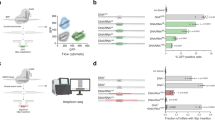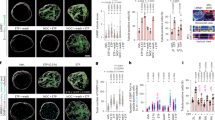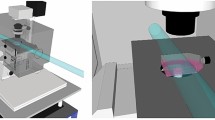Abstract
A cell-free plasmid reactivation assay was used to determine the fidelity of DNA double-strand break (DSB) repair in a panel of eight DSB repair-proficient human tumour cell lines. Nuclear protein extracts derived from radiosensitive tumour cells were less capable of correctly rejoining EcoRI-induced DSBs than were similar extracts from radioresistant tumour cells. Linear regression analysis suggests that there was a significant (r2 = 0.84, P = 0.001, d.f. = 6) correlation between the fidelity of DSB rejoining and the SF2 values of the cell lines studied. This cell-free assay is clearly sensitive to differences in the nuclear protein composition that reflect the clinically relevant radiosensitivity of these cell lines. The fact that our cell-free assay yielded similar results to previous studies that used intracellular plasmid reactivation assays suggests that those differences in DSB mis-rejoining frequencies in radiosensitive and radioresistant cell lines may be due to inherent differences in nuclear protein composition and are not directly attributable to differences in proliferation rates between cell lines. The underlying cause for this association between DSB mis-rejoining frequencies and radiosensitivity is presently unknown, however restriction endonuclease mapping and polymerase chain reaction (PCR) amplification analysis revealed that approximately 40% of the mis-rejoined DSBs arose as a result of the deletion of between 40 and 440 base pairs. These data raise the possibility that the radiosensitivity of DSB repair-proficient human tumour cell lines may be partly determined by the predisposition of these cell lines to activate non-conservative DSB rejoining pathways.
This is a preview of subscription content, access via your institution
Access options
Subscribe to this journal
Receive 24 print issues and online access
$259.00 per year
only $10.79 per issue
Buy this article
- Purchase on SpringerLink
- Instant access to full article PDF
Prices may be subject to local taxes which are calculated during checkout
Similar content being viewed by others
Author information
Authors and Affiliations
Rights and permissions
About this article
Cite this article
Britten, R., Liu, D., Kuny, S. et al. Differential level of DSB repair fidelity effected by nuclear protein extracts derived from radiosensitive and radioresistant human tumour cells. Br J Cancer 76, 1440–1447 (1997). https://doi.org/10.1038/bjc.1997.576
Issue date:
DOI: https://doi.org/10.1038/bjc.1997.576



